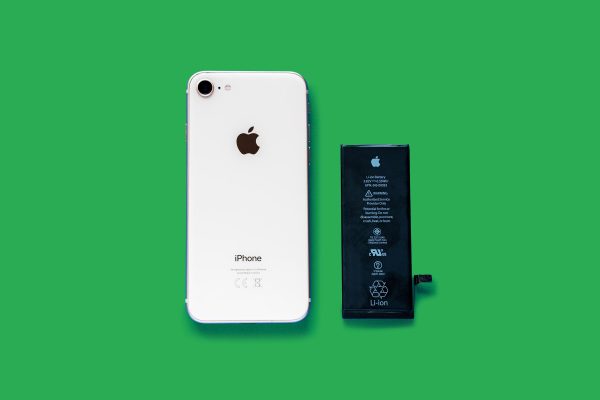The Rubik’s Cube is a popular mechanical puzzle invented in 1974 by Hungarian sculptor and professor of architecture Ernő Rubik. With over 350 million cubes sold worldwide, it remains one of the best-selling puzzles of all time. Building the Ultimate LEGO Rubik’s Cube: A Step-by-Step Guide combines the challenge and creativity of both the Rubik’s Cube and LEGO building sets, offering enthusiasts a chance to create their own functional, customizable cube.
LEGO Rubik’s Cubes have gained popularity in recent years as a unique way for fans to test their puzzle-solving skills and showcase their creativity. With step-by-step instructions and customizable designs, builders can personalize their cube to suit their preferences, whether it be in color scheme or difficulty level. This merging of two iconic toys offers a new twist on traditional puzzles and appeals to a wide audience of both Rubik’s Cube and LEGO enthusiasts.
For those who enjoy a good challenge, building a LEGO Rubik’s Cube provides a sense of accomplishment and satisfaction upon completion. With studies showing that solving puzzles can improve cognitive abilities, such as concentration and problem-solving skills, engaging in activities like building a LEGO Rubik’s Cube can have lasting benefits. Additionally, the hands-on nature of constructing a functional puzzle adds a tactile element to the experience, making it both engaging and rewarding for builders of all ages.
Assembling a LEGO Rubik’s Cube offers a creative and interactive way to engage with two beloved toys, combining the timeless appeal of the Rubik’s Cube with the endless possibilities of LEGO building. Whether as a personal project or a gift for a puzzle enthusiast, the Ultimate LEGO Rubik’s Cube: A Step-by-Step Guide provides a fun and challenging experience that encourages creativity and problem-solving skills. With its unique blend of hands-on building and puzzle-solving, the LEGO Rubik’s Cube offers a new twist on a classic pastime that will continue to entertain and inspire builders for years to come.
Can a Lego Rubik’s Cube Solve the Classic Puzzle?
When it comes to combining creativity and problem-solving, nothing quite beats the challenge of a Rubik’s Cube. The classic 3×3 puzzle has stumped countless individuals over the years, with its intricate twists and turns that must be navigated in order to achieve a perfect, uniform color on each side.
But what if you could take this iconic puzzle to the next level by building your very own Rubik’s Cube out of Lego bricks? That’s where the Lego Rubik’s Cube comes in. This innovative twist on a beloved classic allows you to not only solve the puzzle, but also create your own unique design using the versatile building blocks of Lego.
One of the key advantages of the Lego Rubik’s Cube is its customizable nature. With Lego bricks, you have the freedom to design and build your cube in any way you see fit. Whether you want to stick to the traditional Rubik’s Cube color scheme or create a completely original pattern, the choice is yours. This level of personalization adds a whole new dimension to the puzzle-solving experience, allowing you to express your creativity while exercising your problem-solving skills.
In addition to its creative potential, the Lego Rubik’s Cube also offers a hands-on approach to understanding the mechanics of the classic puzzle. By physically building and manipulating the cube, you can gain a deeper insight into how the puzzle works and how each twist and turn affects the overall solution. This tactile experience can be especially beneficial for visual learners who may struggle to grasp the abstract concepts of the Rubik’s Cube through traditional methods.
Overall, the Lego Rubik’s Cube offers a fun and engaging way to challenge yourself and put your problem-solving skills to the test. With its customizable design and hands-on approach, this unique twist on a classic puzzle is sure to provide hours of entertainment for Lego enthusiasts and Rubik’s Cube aficionados alike. Stay tuned as we delve deeper into the world of Lego Rubik’s Cubes and explore the endless possibilities they offer for creative play and mental stimulation.
Choosing the Right LEGO Pieces
When building a LEGO Rubik’s Cube, it is crucial to select the right pieces. You will need 27 cube-shaped bricks to represent the individual pieces of the Rubik’s Cube. These should be in six different colors to correspond with the traditional Rubik’s Cube colors: white, yellow, red, orange, blue, and green.
Building the Center Pieces
Start by constructing the center pieces of each face of the Rubik’s Cube. These pieces do not move, so they will serve as reference points when solving the puzzle. Use a 1×1 brick of the corresponding color for each center piece.
Assembling the Edge Pieces
Next, assemble the edge pieces of the Rubik’s Cube. These are the pieces that have two colors and can be twisted along the edges of the cube. Use 1×2 bricks to create the edge pieces, making sure that the colors match up correctly.
Completing the Corner Pieces
Lastly, construct the corner pieces of the Rubik’s Cube. These pieces have three colors and are located at the corners of the cube. Use 1×3 bricks to build the corner pieces, ensuring that the colors are arranged correctly to align with the center and edge pieces.
Putting It All Together
Once you have all 27 pieces assembled, it’s time to put your LEGO Rubik’s Cube together. Start by building the white face, followed by the yellow, red, orange, blue, and green faces. Make sure that each piece is oriented correctly and that the colors are aligned properly before attempting to twist the cube.
- Choose the right LEGO pieces
- Build the center pieces
- Assemble the edge pieces
- Complete the corner pieces
- Put it all together
Can I use any Lego pieces to build a Rubik’s Cube?
Yes, you can use any standard Lego pieces to build a Rubik’s Cube. You can choose pieces of different sizes, shapes, and colors to create a unique design, just like with a regular Rubik’s Cube.
How do I start building a Lego Rubik’s Cube?
Start by gathering all the Lego pieces you need in various colors to mimic the traditional Rubik’s Cube. Then, follow a step-by-step guide or tutorial to assemble the cube layer by layer, making sure each piece is securely attached to the rest of the cube.
Can I solve a Lego Rubik’s Cube like a regular Rubik’s Cube?
While solving a Lego Rubik’s Cube follows the same principles as solving a regular Rubik’s Cube, the process may vary slightly due to the different texture and size of the Lego pieces. Practice and patience are key to solving both types of cubes.
Are there any special techniques or tips for building a Lego Rubik’s Cube?
One tip is to ensure that each piece is firmly attached to the cube to prevent pieces from falling off during use. Additionally, consider using different colors or patterns on each face to make solving the cube more challenging and visually appealing.
Conclusion
In conclusion, the Lego Rubik’s Cube is a fascinating creation that combines the beloved aspects of both Lego building and Rubik’s Cube solving. The intricate design of the cube allows for a customizable solving experience, with the ability to change the colors and patterns of the cube at will. This provides a unique challenge for Rubik’s Cube enthusiasts and Lego fans alike, offering endless possibilities for solving and creating new patterns. Additionally, the Lego Rubik’s Cube serves as a creative outlet for those looking to push the boundaries of traditional Rubik’s Cube solving and add a new dimension to their puzzle-solving experience.
Overall, the Lego Rubik’s Cube is a wonderful blend of creativity, problem-solving, and design. It showcases the versatility of both Lego and Rubik’s Cube, inspiring individuals to think outside the box and come up with innovative solutions to challenges. Whether you are a seasoned Rubik’s Cube solver or a Lego enthusiast looking for a new project, the Lego Rubik’s Cube is sure to provide hours of entertainment and satisfaction. So why not give it a try and see where your imagination takes you?





0